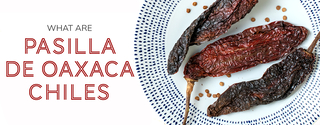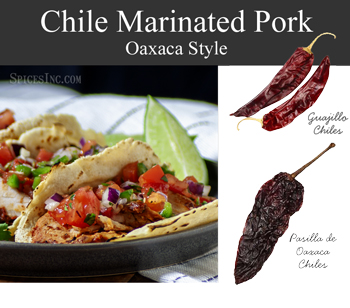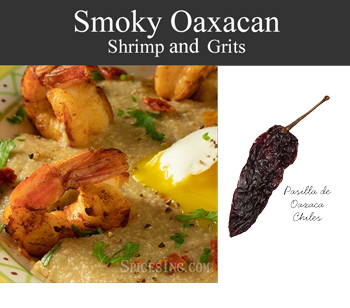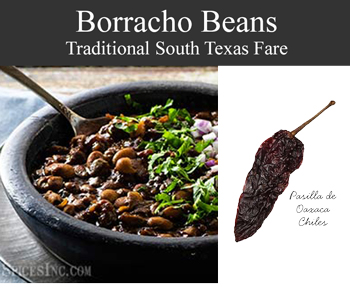What Are Pasilla de Oaxaca Chiles
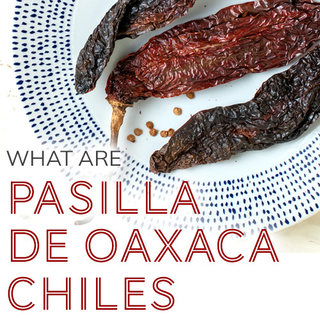
What Are Pasilla de Oaxaca Chiles
Pasilla de Oaxaca chiles (pronounced "pah-SEE-yah day wa-HAAK-kah") are a variety of smoked pasilla chiles grown in the Oaxaca region of Mexico.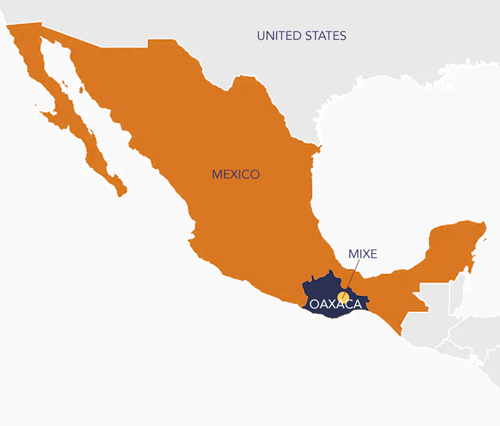
Like many Mexican chiles, they are known by one name when growing fresh and are called another name when they are dried. Pasilla de Oaxaca chiles are called chilaca (“CHIL-a-ka”) chile when in their fresh state.
You are likely here because you have heard of Pasilla de Oaxaca chiles but aren’t sure if they are the chiles you need. We are here to help.
We’ve been sourcing, processing, and selling Mexican dried chiles for more than ten years. This is the fifth most popular selling chile to our Mexican restaurant customers.
We know Oaxacan Pasilla peppers, and this article covers all the questions you need to know about this chile. You will learn when and how to use them, where to find them, what to look for when buying, and the differences between this Pasilla pepper and other chile peppers.
Table of Contents
All About Pasilla de Oaxaca Chiles
What Do Pasilla de Oaxaca Chiles Taste Like?
How to Rehydrate Oaxaca Chiles
Pasilla de Oaxaca Chile Substitute
All About Pasilla de Oaxaca Chiles
A cultivar of Capsicum annuum, Pasilla de Oaxaca chiles are closely related to the better known Pasilla Negro chiles that are grown further north in south-central Mexico.
Pasilla de Oaxaca chiles are native to Oaxaca, a Mexican state located in the southwestern area of the country. They are cultivated in Mixe, a municipal district of Oaxaca found in the northeastern highlands of the Sierra Norte mountains, one of the three mountain chains that come together to form Oaxaca’s rugged terrain.
Chiles, like olives and wine, are affected by terroir. Their flavor and heat are very closely linked to where they’re grown.
To be considered a “true” Pasilla Mixe chile, these chiles must be grown in Mixe, not harvested for seeds and cultivated elsewhere.
Once Pasilla de Oaxaca chiles are harvested, they are smoked and dried for 2-3 days. While the chiles are grown throughout the Mixe region, their birthplace and their original producers are from the towns of Santa María Alotepec and Santiago Atitlán.
| Ingredients | Pasilla Chile |
| Also Called | Pasilla Mixe, chile de Oaxaca, or Oaxacan pasilla |
| Recommended Uses | Use in bean dishes, pasta, moles, salsas, sauces, and soups |
| Flavor Profile | Sharp smoky flavor with hints of tobacco and a biting heat that lingers |
| Scoville Heat Units | 15,000 - 20,000 SHU |
| Botanical Name | Capsicum annuum |
| Cuisine | Mexican |
| How to Store | Airtight container in a cool, dark place |
| Shelf Life | 1-2 Years |
| Country of Origin | Mexico |
What Do They Look Like?
Pasilla de Oaxaca peppers are about 1 to 1-1/2” wide and 6-8" long. This wrinkly chile is a dark reddish-brown color. Top-quality Pasilla de Oaxaca chiles will be somewhat soft and pliable. Older chiles will be hard and brittle.
What Do Pasilla de Oaxaca Chiles Taste Like?
Pasilla de Oaxaca chiles have a sharp, smoky flavor with hints of tobacco and a biting heat that lingers.
Are They Spicy?
We considered the Pasilla de Oaxaca to be a hot heat chile. It comes in at 15,000 to 20,000 SHU (Scoville Heat Units).
How Do You Use?
Pasilla de Oaxaca peppers are used in some of the famous Oaxacan moles, Latin-style bean dishes, salsas, sauces, soups, and in a regional favorite -- chile Rellenos.
They are popular in vegetarian dishes because their rich smokiness imparts a bacon-y ham flavor without using any meat.
For optimum flavor, lightly toast them on a skillet over medium heat before using them. Toast them until their volatile oils are released and a pleasantly smoky aroma fills the air.
You can grind them into a powder or rehydrate them to make a paste or a puree. If you use too much Pasilla de Oaxaca powder and need a recipe rescue, you can add some pureed tomatoes to mute the heat a bit.
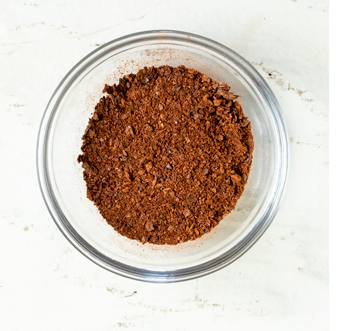 How to Make Pasilla de Oaxaca Chile Powder
How to Make Pasilla de Oaxaca Chile Powder
It’s easy to turn Pasilla de Oaxaca chiles into a versatile chile powder. This chile can have a kick, so we suggest wearing gloves if you are sensitive to capsaicin, do not touch your face or eyes, and wash your hands thoroughly once you are done working with them.
- Remove the stem with a sharp knife.
- Slit the chile lengthwise so you can pull it open. Pour out seeds and pull out any veins, and discard them.
- Flatten the Pasilla de Oaxaca chile as much as possible. Toast it in a dry pan over medium heat for a minute, then flip.
- Continue to toast the chile, moving it constantly in the pan until it is fragrant and starts to turn brown. This should take between 3-5 minutes. Remove from heat.
- When it is cool enough to handle, tear it into pieces and put it in a spice grinder or a mortar and pestle. It should start to break down very quickly. Grind to desired consistency and use immediately or store away from light and heat.
How to Rehydrate Oaxaca Chiles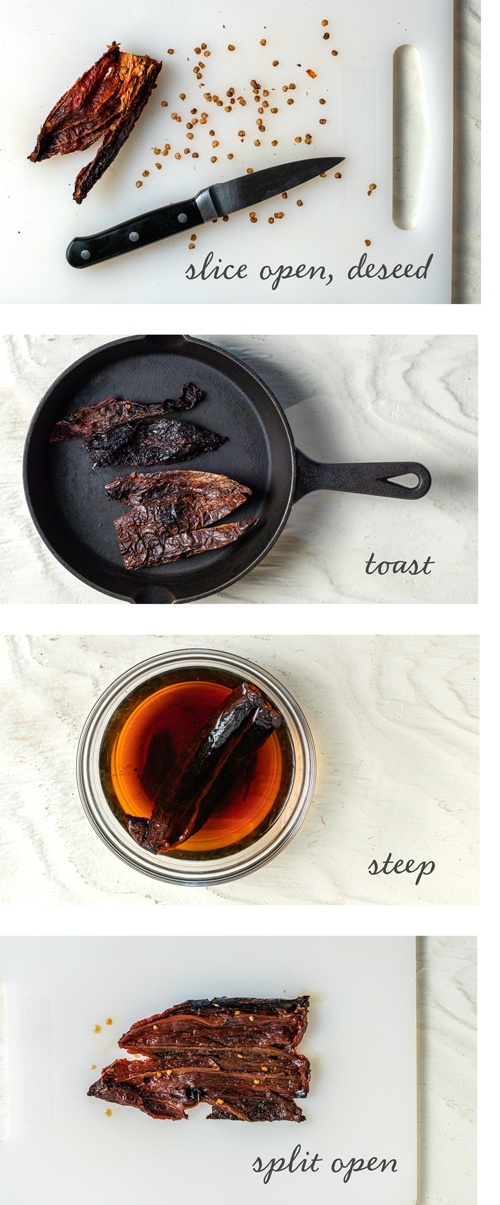
Pasilla de Oaxaca chiles have thin skin; all you need to do to rehydrate them is use a standard rehydration process.
- Remove the stem with a sharp knife.
- Slit the chile lengthwise so you can pull it open. Pour out seeds and pull out any veins, and discard them.
- Flatten the Pasilla de Oaxaca chile as much as possible. Toast it in a dry pan over medium heat for a minute, then flip.
- Continue to toast the chile, moving it constantly in the pan until it is fragrant and starts to turn brown. This should take between 3-5 minutes. Remove from heat.
- Place chiles in a heat-proof bowl. Pour boiling water over them to cover and let them sit for 10-15 minutes: drain, slice, puree, or mash into a paste.
-
We do NOT recommend saving Pasilla de Oaxaca soaking liquid. It is highly bitter and smoky, and very spicy. Our taste tester said it was like taking a sip of hot charcoal.
We suggest you toast them before rehydrating, but if you are pressed for time, that step is optional. And remember to wear gloves when working with this pepper if you are sensitive to capsaicin. Do not touch your face or eyes; wash your hands thoroughly once your work with the chiles is complete.
Chiles from the Oaxaca Region
While Mexican dried chiles are the key to authentic Mexican cuisine, Oaxaca is the most biodiverse state in Mexico and home to arguably one of the world's most diverse collections of chiles. Pasilla de Oaxaca are the most famous chiles from this region but are not the only chiles found there.
Oaxaca is the seat of convergence for three mountain ranges—the Sierra Atravesada, Sierra Madre de Oaxaca and Sierra Madre del Sur. Oaxaca has one of the most rugged terrains in all of Mexico, while throughout the mountain ranges are numerous narrow valleys, canyons, and ravines that grow some of the finest chiles in the world.
Some of the better-known of the hard-to-find Oaxacan chiles are:
- - Chilhuacle Negro, with sweet and smoky flavor, maybe one of the best known of these rare chiles because of their use in mole negro, one of the most popular Oaxacan dishes.
- - Chilhuacle Rojo, or red Chilhuacles, are used in mole coloradito.
- - Chilhuacle Amarillo (sweet citrus-like flavor), or yellow Chilhuacles, are used to make mole Amarillo.
- - Chile de Agua is often stuffed with a pork hash and is also used in salsa, mole sauces, dried into a powder, and added to seasoning blends.
- - Taviche chiles are often paired by Oaxacan chefs with goat cheese and portabella mushrooms.
These chiles are practically impossible to find outside of Mexico as they are grown on small patches in rugged or rural areas. These farmers face numerous challenges regarding expanding their crops and making increased chile production profitable enough to satisfy their efforts and increased demand.
The four most challenging hurdles Oaxacan farmers face regarding increased pepper yield and profit in chile production are:
- They lack readily accessible farmland
- They lack the technical capability to increase their productivity
- They tend to be very suspicious of outsiders that are needed for distribution
-
Those distributors that can get into the area have traditionally not paid the farmers enough to justify more significant chile production

Pasilla de Oaxaca Chile Substitute
If you need a substitute for a recipe that calls for Pasilla de Oaxaca, you can use either Chipotle Meco chiles (5,000 – 10,000 SHU) or Chipotle Morita (5,000 – 10,000 SHU). You can also use equal quantities of chipotle in adobo sauce plus one teaspoon of sauce per chile.
What to Look for When Buying Pasilla de Oaxaca Peppers
Look for Pasilla de Oaxaca chiles that are deep burgundy; they may have some darker patches on them which come from the drying and smoking process, though they should never look charred or ashy. Chiles should be relatively soft and pliable but dry to the touch.
If a chile feels damp, it hasn’t been properly dried and will probably develop mold quickly.
You should only buy these chiles if they are whole, not brittle or broken. Pasilla de Oaxaca chiles also have a robust and smoky smell with the faint aroma of ripe berries behind them. If they don’t smell smoky, they aren’t Pasilla de Oaxaca.
To get the best Pasilla de Oaxaca, shop for chiles with a retailer you can trust, who can provide you with fresh and ready-to-use dried peppers and answer questions knowledgeably.
Where to Buy Pasilla de Oaxaca Chiles
This chile pepper is very hard to find. You might be able to find Oaxacan Pasilla chiles in some Mexican markets or at some online retailers. Both shopping environments have plusses and minuses.
Mexican markets are often very familiar with the products they’re selling; a specialty shop like this should be very well versed in the qualities of the Oaxaca chiles. However, they tend to have diminished buying power and slower sales, so that they may be expensive, and you can’t always be sure how long a chile has been sitting on their shelves.
You should take a good look at online retailers before buying online. While big-box online companies may offer convenience and free shipping, they act as a fulfillment center for smaller companies. The larger shippers provide no oversight into the quality of the chile. It is just a widget to them.
Verify that online specialty suppliers have been in business for a while; this increases the odds that they will know a Pasilla de Oaxaca pepper from a Pasilla Negro pepper and have the processes in place to ensure that orders for dried chile peppers are being filled with high-quality chiles and shipped quickly. They also tend to have staff that knows dried chile peppers and can help guide you to the correct chile to meet your needs.
The downsides include you can’t inspect the chiles yourself before purchasing; the chiles have to be shipped to you, which means there’s a waiting period between order and delivery. Lastly, shipping can be expensive, particularly if the retailer doesn’t have a free shipping policy.
We hope you’re excited by the idea of working with Pasilla de Oaxaca. They’re delicious and versatile, and this harder-to-find chile is well worth searching for.
As you master Oaxaca Pasilla Chiles, you might want to expand your knowledge about the different Mexican moles or the culinary regions of authentic Mexican cuisine to help you create memorable meals for your family and friends.

